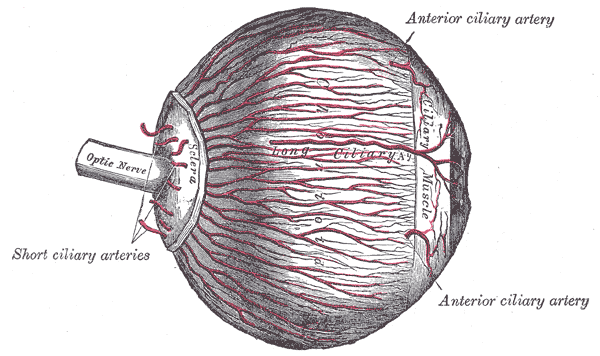Amaurosis fugax
| Amaurosis fugax | |
 | |
|---|---|
| The arteries of the choroid and iris. The greater part of the sclera has been removed. | |
| ICD-10 | G45.3 |
| ICD-9 | 362.34 |
| DiseasesDB | 501 |
| MedlinePlus | 000784 |
| MeSH | D020757 |
|
Amaurosis fugax Microchapters |
|
Diagnosis |
|---|
|
Treatment |
|
Case Studies |
|
Amaurosis fugax On the Web |
|
American Roentgen Ray Society Images of Amaurosis fugax |
Editor-In-Chief: C. Michael Gibson, M.S., M.D. [1]
Treatment
If the diagnostic workup reveals a systemic disease process, directed therapies to treat that underlying etiology should be initiated. If the amaurosis fugax is caused by an atherosclerotic lesion, aspirin is indicated, and a carotid endarterectomy if the stenosis is surgically accessible. Generally, if the carotid artery is still patent, the greater the stenosis, the greater the indication for endarterectomy. "Amaurosis fugax appears to be a particularly favorable indication for carotid endarterectomy. Left untreated, this event carries a high risk of stroke; after carotid endarterectomy, which has a low operative risk, there is a very low postoperative stroke rate."[1] If the full diagnostic workup is completely normal, patient observation is recommended.[2]
Related Chapters
References
Template:Diseases of the nervous system de:Retinaler Arterienverschluss